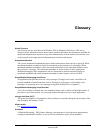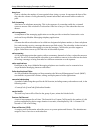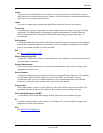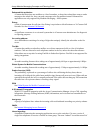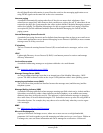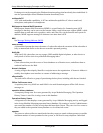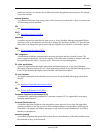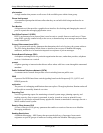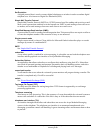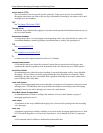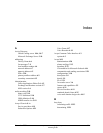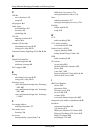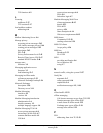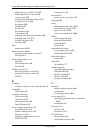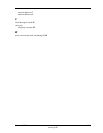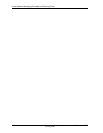
Avaya Modular Messaging Concepts and Planning Guide
IN-2 November 2004
Avaya Modular Messaging Concepts and
Planning Guide
C
Call Me
server functions
3-5
using
9-3
call progress
8-9
Caller Apps
Aria mailboxes
4-5
functions
4-5
scheduling
4-6
CCI
4-3
language selection
4-3
options
4-4
Centum Call Seconds
calculating busy hour
12-23
sizing ports, using
12-23
Common Channel Signaling (CCS)
8-4, 8-10
D
Digital Set Emulation
switch integration
8-4
telephony concepts
8-9
DUC support
4-26
E
Erlang
calculating busy hour
12-23
sizing ports, using
12-23
Exchange server
voice mail domain design rules, Exchange
2000
10-7
voice mail domain design rules, Exchange
2003
10-6
voice mail domain design rules, Exchange
5.5
10-7
F
fax routing address
enabling subscribers
7-7
Fax sender server
functions
3-6
fax servers
interoperability, requirements
7-6
MSS native fax resource
7-2
routing inbound fax calls to
7-8
faxes
enabling subscribers
7-7
routing to third-party fax servers
7-8
Find Me
offline mode
9-12
using
9-12
G
G. 7 11
audio encoding
5-18
G.711 audio encoding
A-law and mu-law
5-18
Grade of service (GOS)
capacity planning
12-22
Erlang B and Erlang C tables
A-1
GSM
audio encoding
5-18
GUI clients
Avaya policy
B-2
Domino Subscriber Options
4-15
iNotes
4-15
Lotus DUC
4-15
Microsoft Outlook Client Add-in
4-16
Outlook Web Access
4-15
I
IBM Lotus Domino
cluster
5-25
description
3-10
Directory server
3-11
server
3-10, 5-25
versions
3-10
voice mail domain design rules
10-7
integrated voice mailbox, introduction
4-26
interfaces
Automated Attendant
4-2
Call Answer
4-2
IBM Lotus Domino GUI clients
4-15
Microsoft Exchange GUI clients
4-15
MSS GUI clients
4-14
multilingual TUI
4-12



